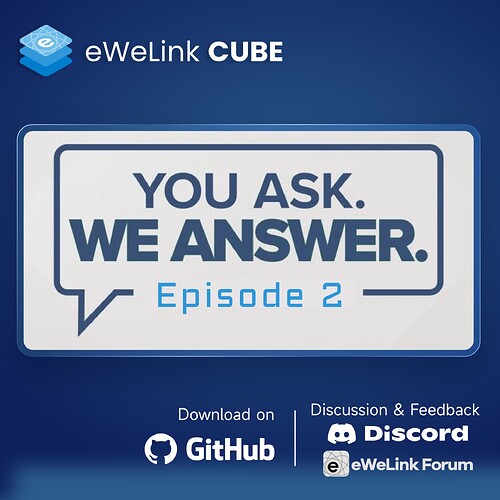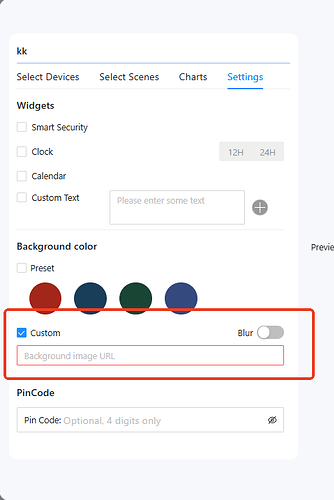Two weeks after Episode 1, we’ve received even more engagements from our amazing community - from Pi users to NAS owners, and even people trying CUBE OS on Mini PCs or Android TV boxes. We love seeing this energy, and the questions raised to us, so here’s Episode 2 of “You Ask, We Answer” ![]()
This time, we’re focusing on two hot topics:
- Where and how you can install CUBE OS
- What’s coming for Zigbee, Matter, Thread, and beyond
Our goal is still the same: help you understand and get the most out of CUBE OS without digging through endless documents and shape its future together with your feedback.
Q1: What installation methods does CUBE OS support during the public beta phase?
User asked:
Is it possible to flash CUBE OS into an Android TV box with 2 GB RAM?
Can I install it on my old Mini PC without a VM?
Does it work on Proxmox / Hyper-V?
My Raspberry Pi 5 isn’t booting. Can it run on Pi 3B?
Answer:
For a smooth experience, we recommend at least 2 GB of RAM when running CUBE OS. We haven’t officially tested setups with less than 2 GB, it may still work if get lucky, but performance and stability can’t be guaranteed.
- Virtual machines(Proxmox / Hyper-V): Our current test release is mainly provided as x86 VM images (VDI/VMDK). These run directly on VirtualBox or VMware. We have had users successfully run CUBE OS on Proxmox/Hyper-V, but we have not officially tested it at this stage. It should be possible, but it can only run as a virtual machine and does not currently support LXC mode or bare-metal installation.
- Mini PC / Android TV box: We don’t yet offer a bare-metal ISO image for direct installation. For now, you can use the provided x86 image and run CUBE OS on virtual machine. If more users request it, we’ll consider a native installer in future releases.
- Raspberry Pi: We officially recommend Pi 4B (2 GB/4 GB RAM) for the smoothest experience. Pi 5 is now supported in our latest builds . Please make sure that the bootloader of the Raspberry Pi you are using is the latest version . You can follow the official tutorial from Raspberry Pi Documentation to update the bootloader. In addition, Pi 3B is not optimized yet and may not run reliably.
In short:
Right now, CUBE OS is easiest to deploy on Pi 4B / Pi 5 , NAS and virtual machine. More installation options will come as the project grows.
Q2: Zigbee, Matter, Thread… what’s supported today and what’s next?
User asked:
Will CUBE OS be able to run both Zigbee and OpenThread at the same time?
Will CUBE OS support Matter over Thread?
Can I export energy data via Matter like I can in Home Assistant?
Zigbee devices seem less stable than Wi-Fi - will Thread improve this?
Answer:
Today, CUBE OS already includes a built-in Matter Bridge :
- You can bring many of your old Wi-Fi devices into Apple Home, Alexa, Google Home, and SmartThings - without relying on cloud-to-cloud linking.
- With a suitable Zigbee dongle, you can also manage a wide range of Zigbee devices directly in CUBE OS.
What’s coming:
- OpenThread: Support is in our plans, but not in the current test version. Once CUBE OS firmware integrates Thread (via OpenThread), you’ll be able to use Matter over Thread with a multi-protocol Zigbee/Thread dongle.
- Energy data via Matter: The Matter standard already defines clusters for energy monitoring, laying the foundation for future integration. While energy data is not yet synchronized over Matter in the current version of CUBE OS, this is a evaluation worth feature. We’re actively exploring implementation paths and assessing both technical feasibility and user demand to determine the best time and approach to introduce energy data support via Matter. And if you guys have any suggestion or idea, or just have check that one of the big giants, like Apple or other one have onboard this feature via Matter, please let us know.
Q3: Why isn’t Zigbee support as flexible as Home Assistant?
User asked (summary) :
“CUBE OS seems limited in Zigbee options. Home Assistant offers Zigbee2MQTT, ZHA, and wider device support. Why not make Zigbee more open and flexible, like adding custom scripts or alternatives?”
Answer:
Home Assistant is a great platform that gives developers and DIY enthusiasts a lot of options - but even HA can’t fully support every Zigbee device, especially those with complex capabilities or proprietary attributes.
With CUBE OS , our starting point is a bit different:
- Our goal is to provide average users with an out-of-the-box experience: guided UI, built-in dashboards, and a straightforward setup - making local smart homes simpler, beginner-friendly and paired with a well-designed UI.
- For Zigbee compatibility, our Zigbee2CUBE framework dynamically maps device-reported capabilities to the mechanism and to gathering proper front-end UI, which makes it more flexible and significantly improves device support.
- We’re confident the experience will keep getting smoother and we’re continuously enhancing Zigbee compatibility. If you have a specific device brand, model, or capability you’d like to see supported, please let us know - your input helps us evaluate and plan future integrations.
Q4: Is CUBE OS only for Sonoff devices?
User asked:
CUBE OS is only for Sonoff devices, right?
Answer:
CUBE OS is designed to go far beyond just Sonoff devices:
• For Zigbee devices: Through our Zigbee2CUBE framework, you can already connect and manage thousands of Zigbee devices from different brands, all unified in CUBE OS.
• For Wi-Fi devices: At the moment, CUBE OS supports eWeLink-compatible Wi-Fi devices, including SONOFF’s. We’re continuously expanding to support more Wi-Fi brands. For example, our partner Yeelight has already released an official add-on to bring Yeelight Wi-Fi devices into CUBE OS. We also welcome any Brand or developer to help enhance this area of support.
• For Thread devices : As mentioned before, support for Thread-based devices is on the way.
In short, CUBE OS is built on open standards like Matter and Zigbee, and we’re steadily widening the ecosystem to integrate a broad range of products.
In summary
Episode 2 shows how CUBE OS keeps evolving:
- More ways to run it on the hardware you already have
- Built-in Matter Bridge to extend your devices to major platforms
- Plans for OpenThread and other advanced features
- Local-first, privacy-friendly, and simpler to set up than traditional DIY stacks
Keep sending us your questions, and we’ll keep answering them every two weeks in “You Ask, We Answer.”
Join our Discord to start discussing and share your feedback!

